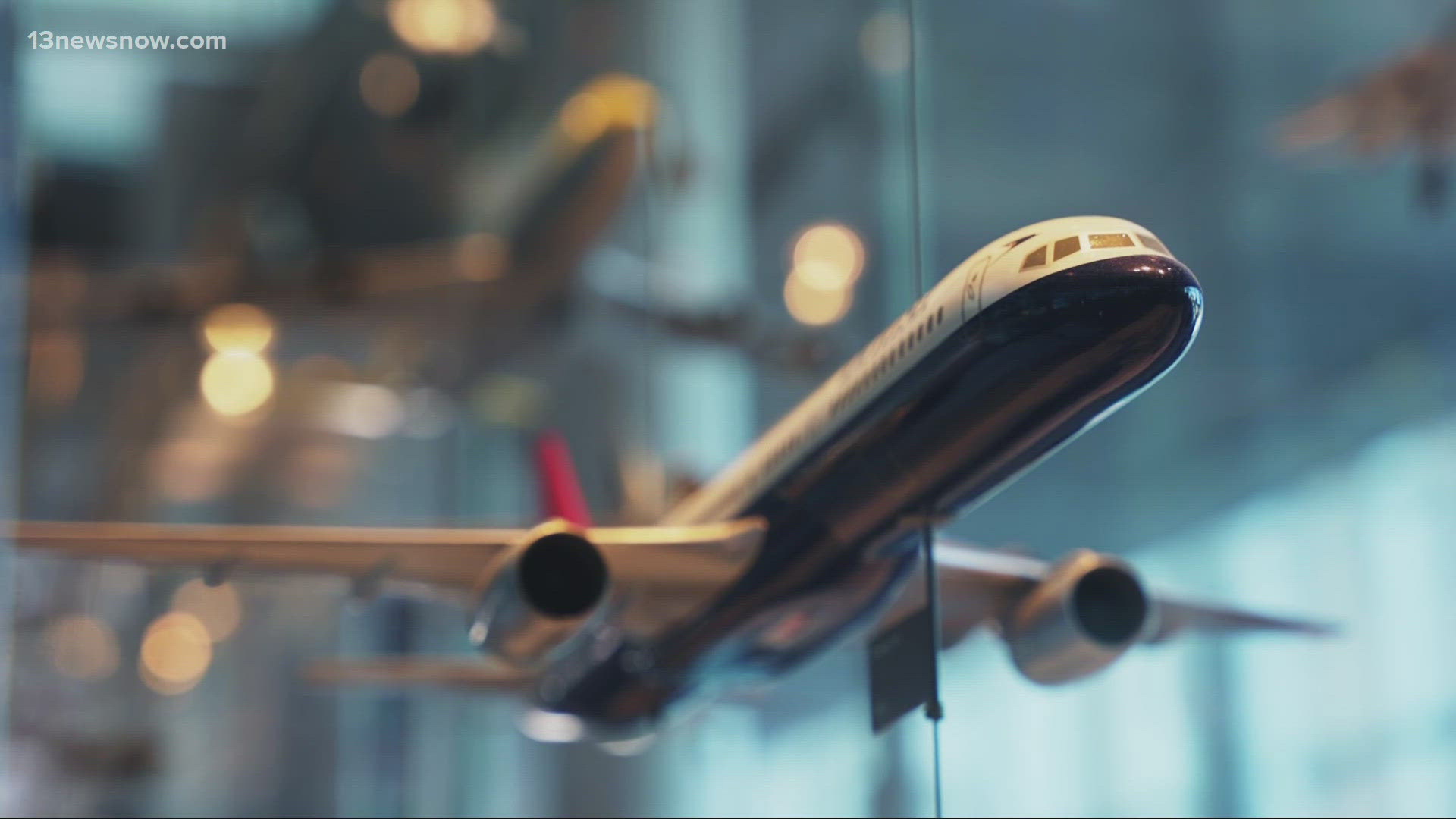NORFOLK, Va. — To get to your dream destination, you’ll probably have to ride in an airplane. One thing that may make you nervous about flying though is the sometimes sickening turbulence during your flight. Let’s talk about how turbulence forms.
There are four types or causes of turbulence: mechanical, thermal, frontal and wind shear. The most common turbulence we experience on planes is thermal. This type of turbulence is created from the heat from the sun.
During the day, especially during the summertime, the sun heats the surface of the Earth differently, depending on which terrain is receiving the sunlight. Flat, dusty areas of the earth heat up more quickly than forested places or bodies of water.
The warmer air and cooler air then mix as the warm air rises and the cool air sinks. This ignites the jolting sensation that may cause us to lift out of our seats.
Thermal turbulence extends from the ground to the very tops of clouds in the area. This is why pilots try their best to fly above the cloud tops.
Another type of turbulence seen around mountainous, hilly, or urban areas is mechanical turbulence. The friction between the air and the uneven terrain as the wind blows creates these bumpy conditions.
Frontal turbulence is turbulence that occurs along a front, most commonly along cold fronts. The turbulence gets worse if that cold front produces thunderstorms.
Lastly, wind shear can cause some bumps in the air. Wind shear is the change in wind speed or direction with height. Winds can also change speed and direction at the same time. Turbulence is present where the winds' speed or direction changes.
So on your next flight, remember to stay calm and buckle up when you encounter turbulence. That's how your weather works!

